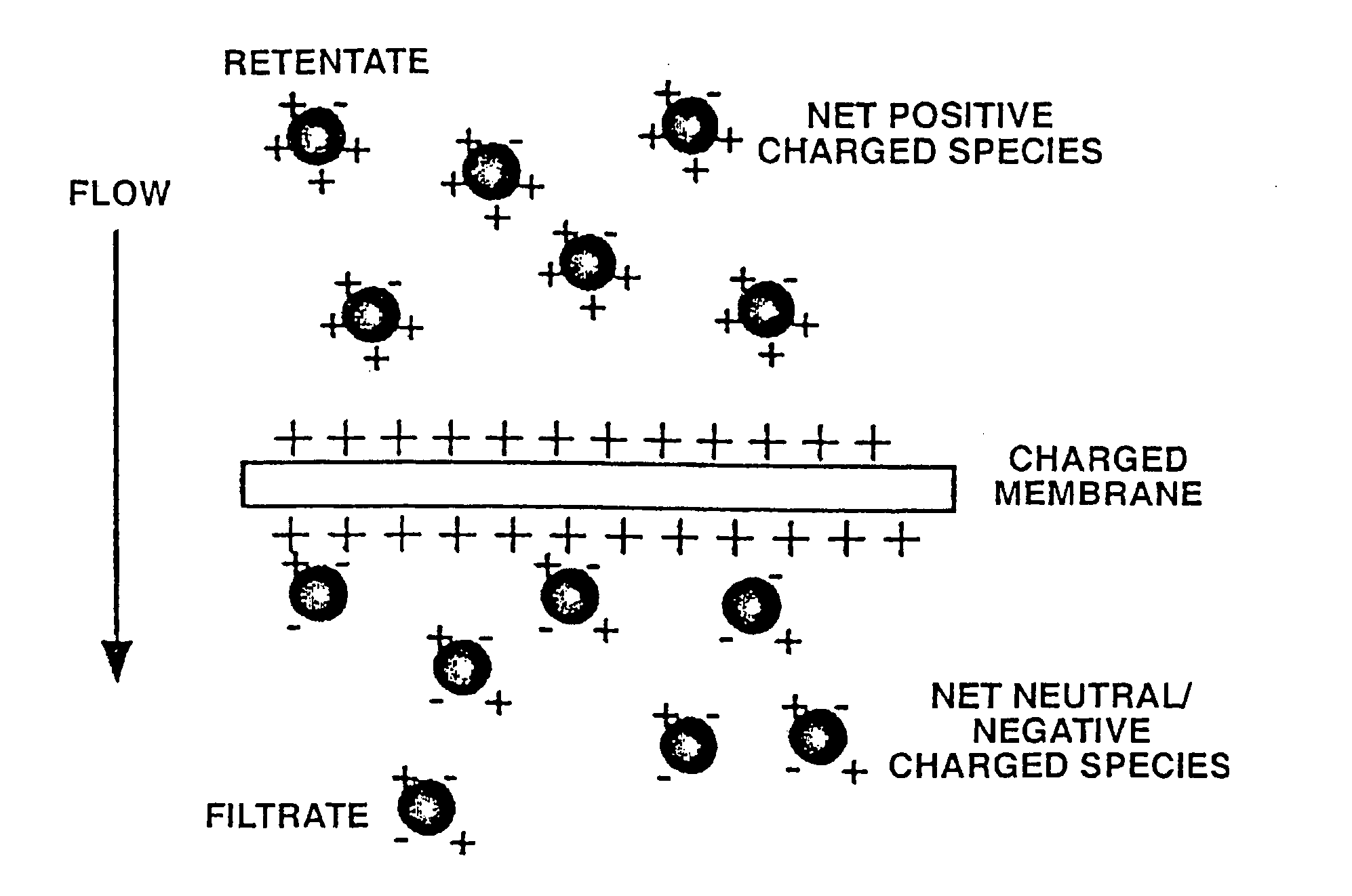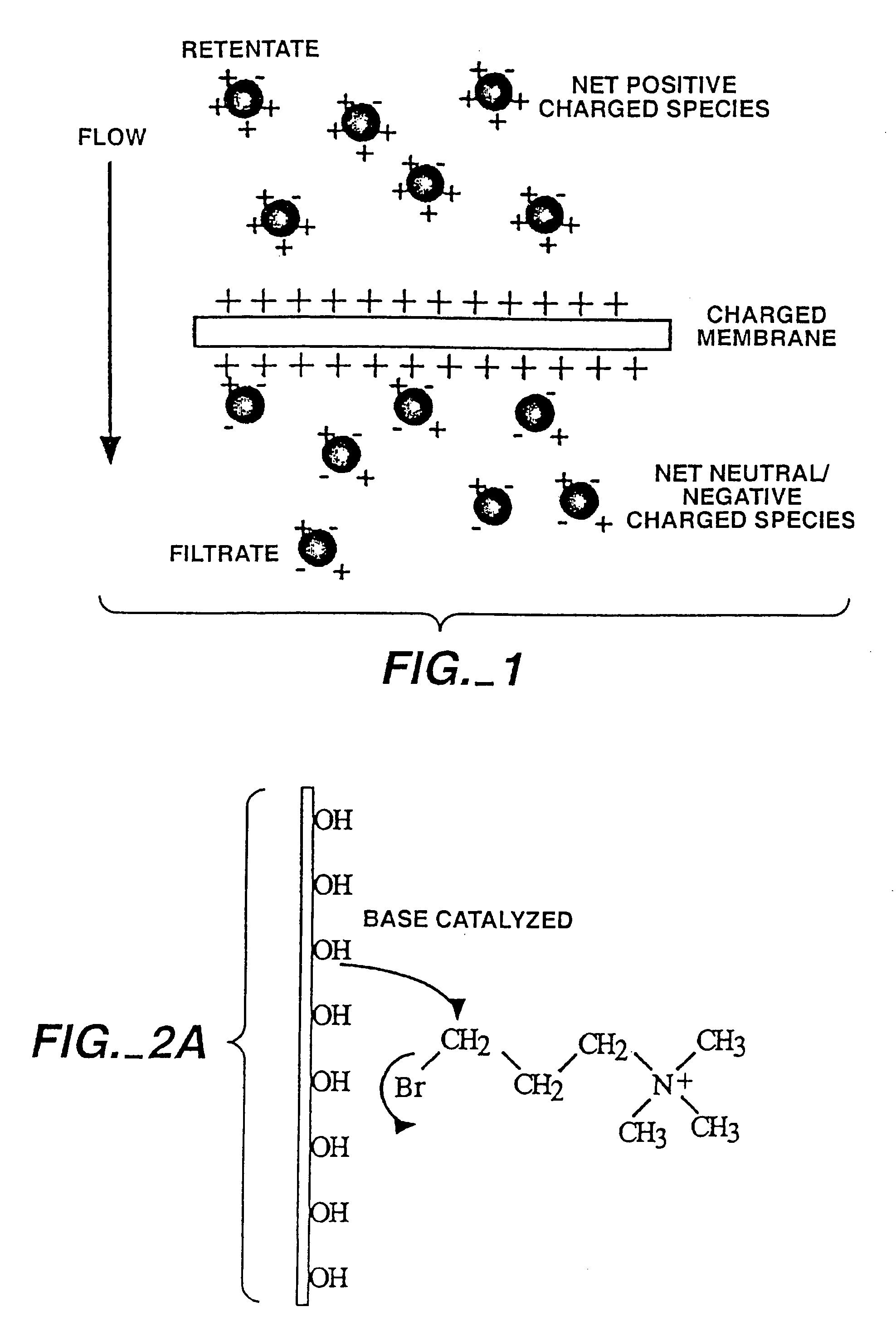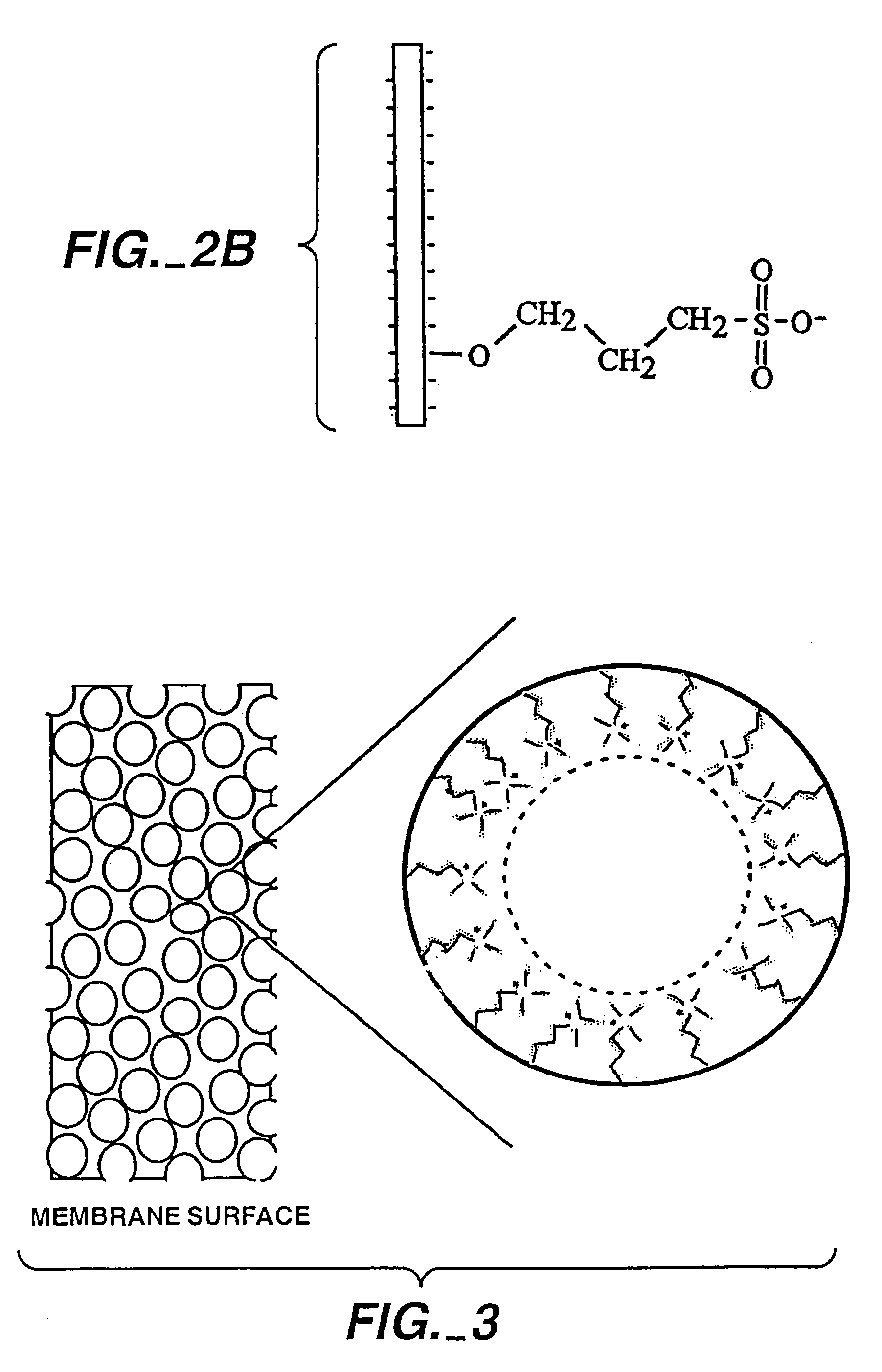Charged filtration membranes and uses therefor
a filtration membrane and filtration membrane technology, applied in the field of chargeable filtration membranes, can solve the problems of limiting separation speed and protein recovery, low selective retention of desired proteins, and low suction rate, etc., and achieves rapid separation, high permeability, and selectivity.
- Summary
- Abstract
- Description
- Claims
- Application Information
AI Technical Summary
Benefits of technology
Problems solved by technology
Method used
Image
Examples
example 1
Adding Charge to Membrane Using Active Flow and no Flow Processes
[0052]Frequently, filtration membrane material, such as composite regenerated cellulose membranes, are available in bulk as flat sheets. The present example discloses how the invention may be used to add charge to membrane sheets using the active flow method of the invention. It is understood that the same or similar method is useful for adding charge to a pre-packaged uncharged membrane in its membrane cartridge, an alternative form in which many membranes are commercially available.
[0053]The experimental conditions are the following. Composite regenerated cellulose membranes (Millipore, Bedford, Mass.) with a nominal molecular weight cut-off of a) 100,000 and b) 300,000 Daltons are used for the present example. The membranes are provided in the form of flat sheet disks. Each disk is assembled in a device suitable for contacting solvent and reactive ligand with the membrane and optionally capable of causing solvent an...
example 2
Preparation of Charged CRC Filtration Membranes
[0070]For illustrative purposes, this example discloses charged CRC membranes and methods of making them. It is understood that charge may be added to a membrane by chemistries known to one of ordinary skill in the art such that the product membrane is charged and selectively retains a desired protein in the retentate, and passes uncharged or oppositely charged proteins with the filtrate. The product charged membrane has the characteristic of a lower sieving coefficient for a given permeability relative to an uncharged membrane, or a higher permeability for a given sieving coefficient.
[0071]CRC membranes are preferred due to their hydrophilicity as well as their mechanical stability to reverse pressure. Stability under basic conditions allows for complete, rapid cleaning and storage. CRC membrane hydrophilicity minimizes protein fouling and simplifies membrane cleaning. The membranes are preferably reacted with the reactive charged comp...
example 3
Membrane Pore Size Distribution is Modified
[0077]Membrane pores are infiltrated by reactive charged compounds under positive pressure when steric factors, such as size and linker arm length, and electrostatic factors, such as charge repulsion, allow it. Thus, according to the invention, membrane pores large enough to allow infiltration of a given reactive charged compound are derivatized by the charged compound such that the size of the pore lumen is reduced. FIG. 3 shows a diagram of a membrane pore having propyl trimethyl ammonium ions covalently attached to the wall of the pore and projecting into the lumen.
[0078]The length of the linker arm controls the degree to which the charged compound projects into the lumen and reduces its effective diameter. The charge generates a positively charged region from which a similarly charged protein will be excluded. Thus, a desired protein having an overall charge that is the same as that of the derivatized membrane is repelled by the surface...
PUM
 Login to View More
Login to View More Abstract
Description
Claims
Application Information
 Login to View More
Login to View More - R&D
- Intellectual Property
- Life Sciences
- Materials
- Tech Scout
- Unparalleled Data Quality
- Higher Quality Content
- 60% Fewer Hallucinations
Browse by: Latest US Patents, China's latest patents, Technical Efficacy Thesaurus, Application Domain, Technology Topic, Popular Technical Reports.
© 2025 PatSnap. All rights reserved.Legal|Privacy policy|Modern Slavery Act Transparency Statement|Sitemap|About US| Contact US: help@patsnap.com



